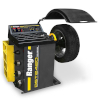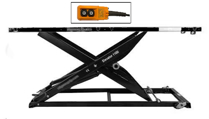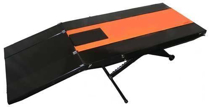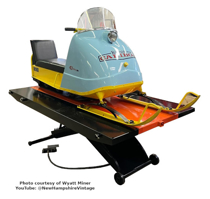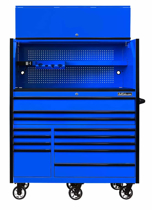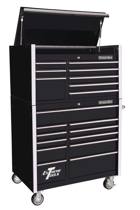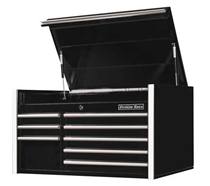- Register
- Log in
- Wishlist (0)
- My Cart (0) You have no items in your shopping cart.
About Plasma Cutting
Plasma cutting is a process that is used to cut steel and other metals of different thicknesses (or sometimes other materials) using a plasma torch. In this process, an inert gas (in some units, compressed air) is blown at high speed out of a nozzle; at the same time an electrical arc is formed through that gas from the nozzle to the surface being cut, turning some of that gas to plasma. The plasma is sufficiently hot to melt the metal being cut and moves fast enough to blow molten metal away from the cut.
Process
The HF Contact type uses a high-frequency, high-voltage spark to ionize the air through the torch head and initiate an arc. These require the torch to be in contact with the job material when starting, and are, therefore, not suitable for applications involving computer numerical controlled (CNC) cutting.
The Pilot Arc type uses a two-cycle approach to producing plasma, avoiding the need for initial contact. First, a high-voltage, low current circuit is used to initialize a very small high-intensity spark within the torch body, thereby generating a small pocket of plasma gas. This is referred to as the pilot arc. The pilot arc has a return electrical path built into the torch head. The pilot arc will maintain itself until it is brought into proximity of the workpiece where it ignites the main plasma cutting arc. Plasma arcs are extremely hot and are in the range of 25,000 °C (45,000 °F).[1]
Plasma is an effective means of cutting thin and thick materials alike. Hand-held torches can usually cut up to 2 in (48 mm) thick steel plate, and stronger computer-controlled torches can cut steel up to 6" (150 mm) thick. Since plasma cutters produce a very hot and very localized "cone" to cut with, they are extremely useful for cutting sheet metal in curved or angled shapes.
Safety
Proper eye protection such as welding goggles and face shields are needed to prevent eye damage called Arc eye as well as damage from debris.
Starting methods
Plasma cutters use a number of methods to start the arc. In some units, the arc is created by putting the torch in contact with the work piece. Some cutters use a high voltage, high frequency circuit to start the arc. This method has a number of disadvantages, including risk of electrocution, difficulty of repair, spark gap maintenance, and the large amount of radio frequency emissions.[1] Plasma cutters working near sensitive electronics, such as CNC hardware or computers, start the pilot arc by other means. The nozzle and electrode are in contact. The nozzle is the cathode, and the electrode is the anode. When the plasma gas begins to flow, the nozzle is blown forward. A third, less common method is capacitive discharge into the primary circuit via a silicon controlled rectifier.
Inverter plasma cutters
Analog plasma cutters, typically requiring more than 2 kilowatts, use a heavy mains-frequency transformer. Inverter plasma cutters rectify the mains supply to DC, which is fed into a high-frequency transistor inverter between 10 kHz to about 200 kHz. Higher switching frequencies give greater efficiencies in the transformer, allowing its size and weight to be reduced.
The transistors used were initially MOSFETs, but are now increasingly using IGBTs. With paralleled MOSFETs, if one of the transistors activates prematurely it can lead to a cascading failure of one quarter of the inverter. A later invention, IGBTs, are not as subject to this failure mode. IGBTs can be generally found in high current machines where it is not possible to parallel sufficient MOSFET transistors.
The switch mode topology is referred to as a dual transistor off-line forward converter. Although lighter and more powerful, some inverter plasma cutters, especially those without power factor correction, cannot be run from a generator (that means manufacturer of the inverter unit forbids doing so; it is only valid for small, light portable generators). However newer models have internal circuitry that allow units without power factor correction to run on light power generators.
History
Plasma cutting - a technology that grew out of plasma welding in the 1960s - emerged as a very productive way to cut sheet metal and plate in the 1980s.[2] It had the advantages over traditional "metal against metal" cutting of producing no metal chips and giving accurate cuts, and produced a cleaner edge than oxy-fuel cutting. Early plasma cutters were large, somewhat slow and expensive and, therefore, tended to be dedicated to repeating cutting patterns in a "mass production" mode.
As with other machine tools, CNC (computer numerical control) technology was applied to plasma cutting machines in the late 1980s into the 1990s, giving plasma cutting machines greater flexibility to cut diverse shapes "on demand" based on a set of instructions that were programmed into the machine's numerical control.[3] These CNC plasma cutting machines were, however, generally limited to cutting patterns and parts in flat sheets of steel, using only two axes of motion (referred to as X Y cutting).
CNC cutting methods
Plasma cutters have also been used in CNC machinery. Manufacturers build CNC cutting tables, some with the cutter built in to the table. The idea behind CNC tables is to allow a computer to control the torch head making clean sharp cuts. Modern CNC plasma equipment is capable of multi-axis cutting of thick material, allowing opportunities for complex welding seams on CNC welding equipment that is not possible otherwise. For thinner material cutting, plasma cutting is being progressively replaced by laser cutting, due mainly to the laser cutter's superior hole-cutting abilities.
A specialized use of CNC Plasma Cutters has been in the HVAC industry. Software will process information on ductwork and create flat patterns to be cut on the cutting table by the plasma torch. This technology has enormously increased productivity within the industry since its introduction in the early 1980s.
In recent years there has been even more development in the area of CNC Plasma Cutting Machinery. Traditionally the machines' cutting tables were horizontal but now due to further research and development Vertical CNC Plasma Cutting Machines are available. This advancement provides a machine with a small footprint, increased flexibility, optimum safety, faster operation.
New Technology
In the past decade plasma torch manufacturers have engineered new models with a smaller nozzle and a thinner plasma arc. This allows near-laser precision on plasma cut edges. Several manufacturers have combined precision CNC control with these torches to allow fabricators to produce parts that require little or no finishing.
Costs
Plasma torches were once quite expensive. For this reason they were usually only found in professional welding shops and very well-stocked private garages and shops. However, modern plasma torches are becoming cheaper, and now are within the price range of many hobbyists. Older units may be very heavy, but still portable, while some newer ones with inverter technology weigh only a little, yet equal or exceed the capacities of older ones.
-courtesty of Wikipedia




